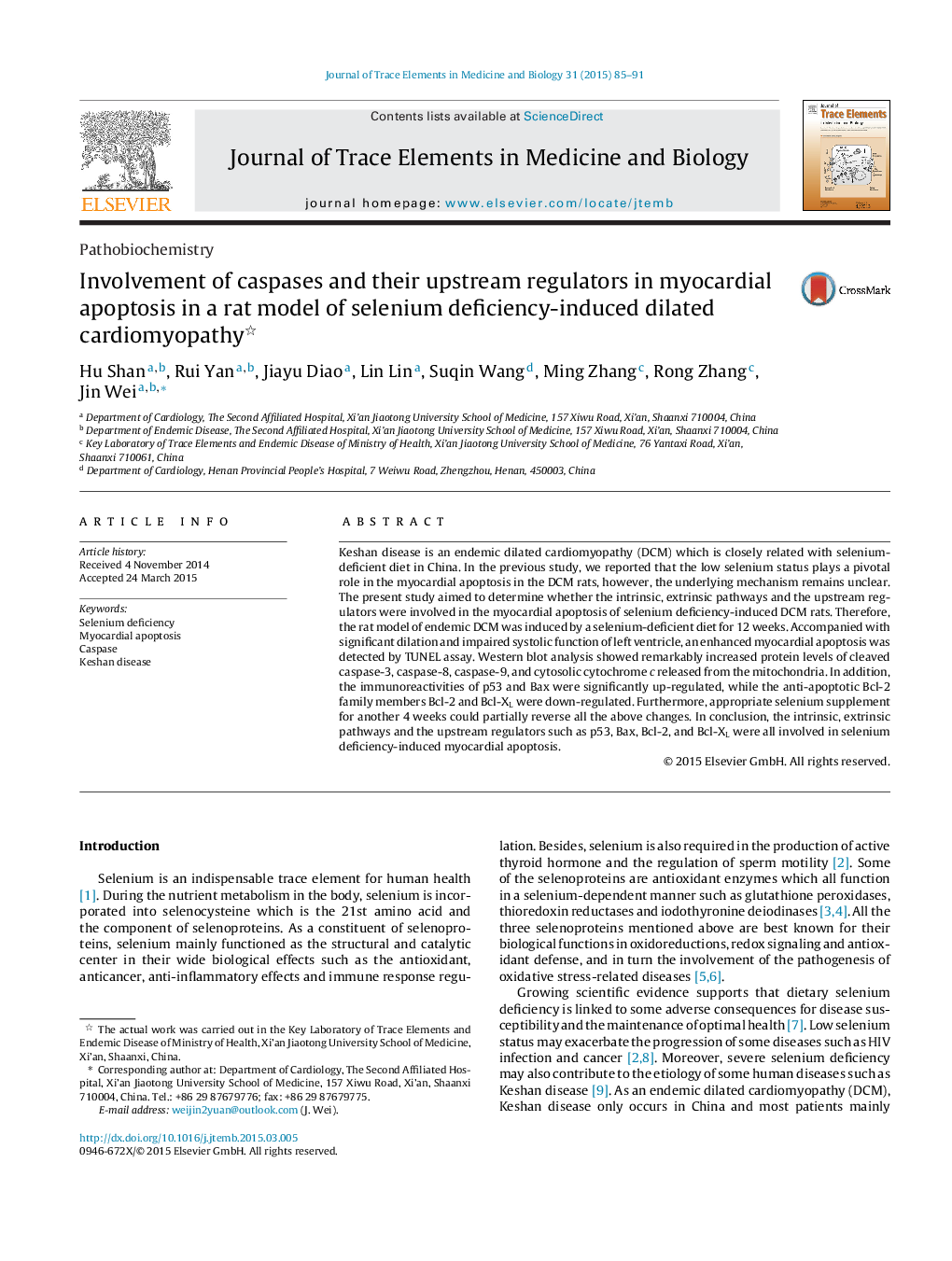| Article ID | Journal | Published Year | Pages | File Type |
|---|---|---|---|---|
| 1226418 | Journal of Trace Elements in Medicine and Biology | 2015 | 7 Pages |
•The intrinsic pathway was activated in Se deficiency-induced myocardial apoptosis.•The extrinsic pathway was activated in Se deficiency-induced myocardial apoptosis.•p53 and Bcl-2 family members were involved in Se deficiency-induced myocardial apoptosis.
Keshan disease is an endemic dilated cardiomyopathy (DCM) which is closely related with selenium-deficient diet in China. In the previous study, we reported that the low selenium status plays a pivotal role in the myocardial apoptosis in the DCM rats, however, the underlying mechanism remains unclear. The present study aimed to determine whether the intrinsic, extrinsic pathways and the upstream regulators were involved in the myocardial apoptosis of selenium deficiency-induced DCM rats. Therefore, the rat model of endemic DCM was induced by a selenium-deficient diet for 12 weeks. Accompanied with significant dilation and impaired systolic function of left ventricle, an enhanced myocardial apoptosis was detected by TUNEL assay. Western blot analysis showed remarkably increased protein levels of cleaved caspase-3, caspase-8, caspase-9, and cytosolic cytochrome c released from the mitochondria. In addition, the immunoreactivities of p53 and Bax were significantly up-regulated, while the anti-apoptotic Bcl-2 family members Bcl-2 and Bcl-XL were down-regulated. Furthermore, appropriate selenium supplement for another 4 weeks could partially reverse all the above changes. In conclusion, the intrinsic, extrinsic pathways and the upstream regulators such as p53, Bax, Bcl-2, and Bcl-XL were all involved in selenium deficiency-induced myocardial apoptosis.
